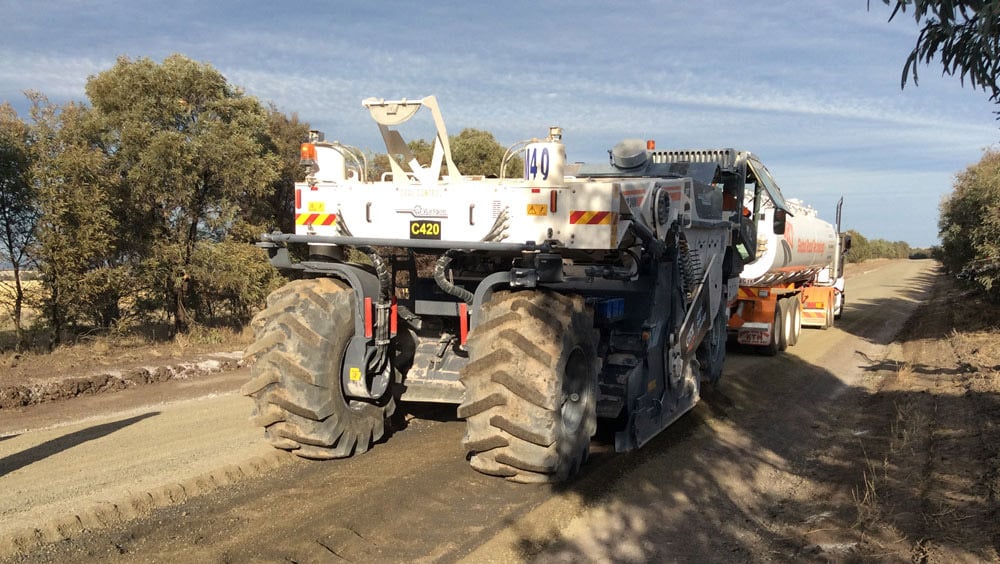
It is a process whereby existing pavement is milled up, crushed, and mixed with binding agents. The ingredients are mixed in-situ without the application of heat, creating a recycled homogeneous mixture able to be distributed evenly across the working surface, paved and re-compacted.
By employing cold recycling equipment, old pavements can be repaired to the desired depth and the crown and cross-slope can be restored. Furthermore, common failure mechanisms such as cracking (fatigue), consolidation of pavement layers (rutting), shear failure, longitudinal cracking, potholes, waves and corrugation can also be addressed and corrected.
The advantages of cold in-situ recycling are:
The cold recycling process is one that may be achieved by either a single machine or a single-pass equipment train.
The single machine is able to break and pulverize old pavement, add recycling agents and lay down the pavement mixture in a single pass. A paver mixer is an example of one such machine. Reclaimed asphalt pavement is added to the machine either by through a cold milling machine or by a dump truck. Virgin material, where required, is spread on working surface ahead of the cold recycling equipment. The recycling agent is then added to the milling chamber of the paver mixer.
The single-pass equipment train comprises a series of equipment, each required for the various stages of the operation. This kind of cold recycling equipment usually consists of a cold milling machine, a portable crusher, a travel-plant mixer and a laydown machine. The crushing unit crushes and screens the material that is too large from the milling machine, and transfers the processed material to a mixer; the recycling agent is added at this stage. Upon mixing, the reclaimed pavement material is either deposited into a hopper or into a windrow. If the material is placed on a windrow, it is subsequently picked up by a laydown machine.
To increase cost effectiveness and improve the environmental outcomes of this method, efficient binders must be employed. Most commonly, binders such as cements, bitumen emulsions or foamed hot bitumen are used. Cement is costly and has a high carbon footprint. On the other hand, bitumen is very sensitive to hot and cold temperatures. Under hot weather, it becomes slippery and soft, and is prone to deformation. In cold temperature conditions, bitumen becomes brittle and is consequently prone to plastic deformation.
Global Road Technology has created specialized soil stabilization products for pavement recycling and reclamation. These products are environment-friendly and provide extraordinary results and durability.
Used on its own or in conjunction with traditional soil stabilisation agents, GRT7000 achieves extremely high UCS results with relatively low dosage rates. For example, testing with as little as 0.7% concentration by mass has seen results over +6MPa achieved. GRT utilises the Wirtgen WR 2400 Recycler to mix its product through with in-situ material.
GRT9000 is used to create a hard, semi-flexible and water impermeable pavement, which displays high bearing and tensile resistance. Through use of this stabilizing agent, pavement thickness can be reduced by 70%.
GRT Polymer Cement Modifier (PCM) can be used in combination with traditional cementitious agents to improve their properties, increasing compressive strength and to prevent against shrinkage cracking. In most cases, cementitious content for GRT polymer mix designs are limited to 2-3%. Even at these low dosages, UCS results of over 5MPa for some gravels were accomplished after 28 days.
For more information on Global Road Technology please contact us: https://globalroadtechnology.com/contact-us/
Are environmental regulations, health and safety concerns or potential profit loss a concern right now?
Contact Us Now